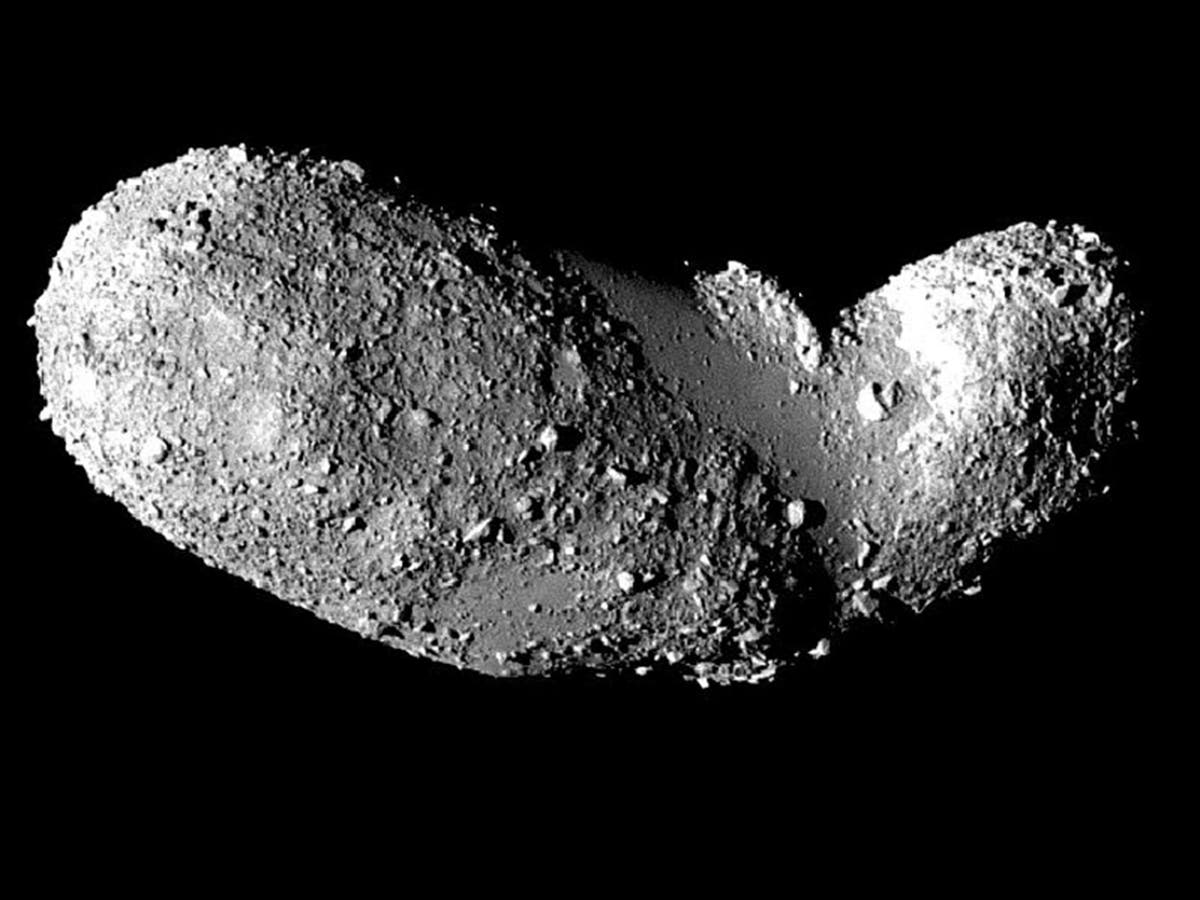Scientists found water and organic matter on the surface of an asteroid sample collected from the solar system – the first time that material was found on an asteroid.
The sample, which was just a single grain, came from the asteroid ‘Itokawa’ for the first Hayabusa mission by the Japan Aerospace Exploration Agency (Jaxa) in 2010.
It shows water and organic matter that originate not from a strange world, but from the asteroid itself. Researchers at Royal Holloway, at the University of London, suggest that the asteroid has been evolving for billions of years, incorporating liquid and organic material in the same way as Earth.
The asteroid withstood extreme heat, dehydration and fragmentation, but managed to reform and rehydrate using the material it collected. The study also shows that S-type asteroids – which are the most common asteroids that come to Earth – can contain the crude components of life.
This could rewrite our knowledge of the history of life on Earth, which previously focused on carbon-rich type C asteroids.
“The Hayabusa mission was a robotic spacecraft developed by the Japan Aerospace Exploration Agency to return samples of a small asteroid close to Earth called Itokawa, for detailed analysis in laboratories on Earth,” Dr. Queenie Chan of the Department of Earth Sciences at Royal Holloway said in a statement.
“After being studied in detail by an international team of researchers, our analysis of a single grain, dubbed ‘Amazon’, preserved the primitive (unheated) and processed (heated) organic matter in ten microns (one thousandth of a centimeter) of distance.
“The organic matter that has been heated indicates that the asteroid has been heated to more than 600 degrees Celsius in the past. The presence of unheated organic matter very close to it means that the fall of primitive organics reached the surface of Itokawa after the asteroid cooled. “
The scientists’ research, entitled “Organic matter and water from the asteroid Itokawa”, was published in the journal Scientific Reports.
“These discoveries are really exciting, as they reveal complex details of an asteroid’s history and how its evolutionary path is so similar to that of prebiotic Earth,” added Dr. Chen.
It is hoped that the analysis of this sample will serve as a basis for more detailed analysis of other samples. Jaxa’s Hayabusa2 mission returned pieces of the asteroid Ryugu last year, bringing back a piece of celestial rock that was only 38 centimeters in diameter.
In 2019, samples of the asteroid Bennu revealed that it was actually older than scientists previously thought, providing a new insight into how the evolution of the Solar System evolved.
Bennu’s observations also confirmed the presence of widespread and abundant hydrated materials, as well as the surprising presence of large rock blocks.
